The quantum computer is now operational on the clinic’s Ohio campus.
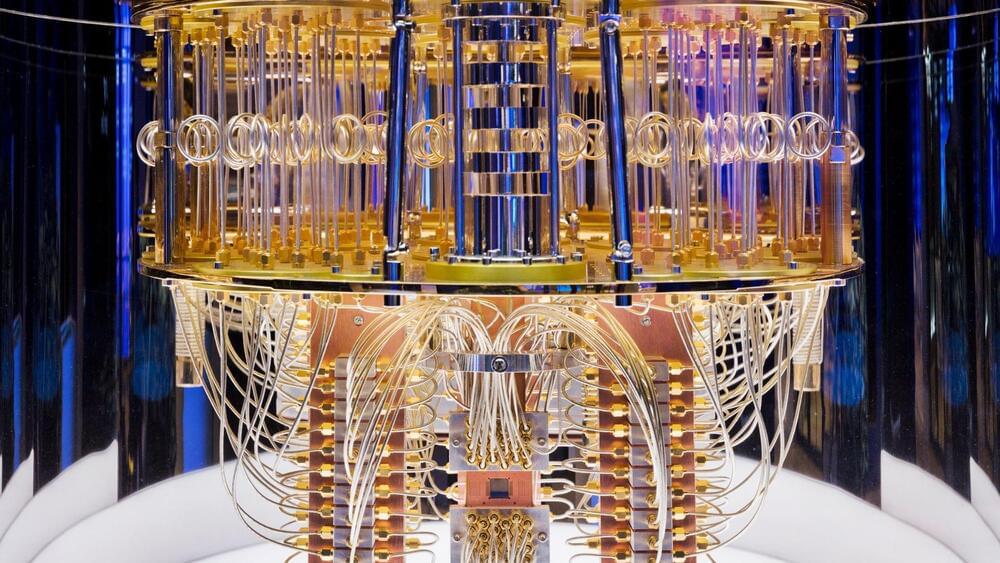

Get a Wonderful Person Tee: https://teespring.com/stores/whatdamath.
More cool designs are on Amazon: https://amzn.to/3wDGy2i.
Alternatively, PayPal donations can be sent here: http://paypal.me/whatdamath.
Hello and welcome! My name is Anton and in this video, we will talk about an experiment that may be able to show whether we live in a simulation.
Links:
https://cqi.inf.usi.ch/qic/wheeler.pdf.
https://en.wikipedia.org/wiki/Simulation_hypothesis.
https://en.wikipedia.org/wiki/Zhuangzi_(book)
https://theconversation.com/how-to-test-if-were-living-in-a-…ion-194929
https://aip.scitation.org/doi/10.1063/5.0087175
Great explanation of double slit experiment: https://www.youtube.com/watch?v=A9tKncAdlHQro.
#simulationhypothesis #quantumphysics #physics.
0:00 Do we live in a simulation?
0:50 History of this question, Chinese, Greek and others.
1:50 Modern take.
3:20 Can it be proven experimentally?
3:50 Not holographic principle!
4:20 Potential proof of simulation ideas.
6:10 Quantum physics proofs, double slit experiments.
7:30 Experimental setup to test this.
10:00 Conclusions and more ideas.
Support this channel on Patreon to help me make this a full time job:
https://www.patreon.com/whatdamath.
Bitcoin/Ethereum to spare? Donate them here to help this channel grow!
bc1qnkl3nk0zt7w0xzrgur9pnkcduj7a3xxllcn7d4
or ETH: 0x60f088B10b03115405d313f964BeA93eF0Bd3DbF
Space Engine is available for free here: http://spaceengine.org.

Abstract.
If all aspects of the mind-brain relationship were adequately explained by classical physics, then there would be no need to propose alternatives. But faced with possibly unresolvable puzzles like qualia and free will, other approaches are required. In alignment with a suggestion by Heisenberg in 1958, we propose a model whereby the world consists of two elements: Ontologically real Possibles that do not obey Aristotle’s law of the excluded middle, and ontologically real Actuals that do. Based on this view, which bears resemblance to von Neumann’s 1955 proposal (von Neumann, 1955), and more recently by Stapp and others (Stapp, 2007; Rosenblum and Kuttner, 2006), measurement that is registered by an observer’s mind converts Possibles into Actuals. This quantum-oriented approach raises the intriguing prospect that some aspects of mind may be quantum, and that mind may play an active role in the physical world. A body of empirical evidence supports these possibilities, strengthening our proposal that the mind-brain relationship may be partially quantum.

One of the largest mysteries of science is that humans have conscious awareness of their complex subjective experiences – or what we call “qualia” – such as being aware of what it’s like to delight in the color of a flower, melt into the comfort of a bed, or to feel sharp pain. Why and how qualia could emerge from physical matter and be a part of the human experience is unknown, and this is called the ‘hard problem’ of consciousness. Related to qualia is the mystery of why humans feel like they have free will, or the ability to intentionally choose and execute actions.
The ‘easy’ problem of consciousness is mapping these mind states to brain states, such as identifying which brain regions are active during a certain experience, such as smelling a flower. Despite advances in classical physics and neuroscience, many aspects of the mind-brain relationship, such as qualia, remain unresolved. New theories of mind are required to address this perennial mystery.
In a new paper, we propose that some aspects of mind are quantum and can play an active role in the physical world, explaining some of the unexplainable.

Photosynthesis is the process that plants, algae, and even certain species of bacteria use to convert sunlight into oxygen and chemical energy stored as sugar (aka gluclose). But what are the mechanisms behind one of nature’s most profound processes?
These are questions that a team of researchers led by the Ludwig Maximilian University of Munich (LMU) hope to answer as they used quantum chemical calculations to examine a photosynthesis protein complex known as photosystem I (PSI) in hopes of better understanding the complete process of photosynthesis and how plants are able to convert sunlight to energy, specifically pertaining to how chlorophylls and the reaction center play their roles in the process.
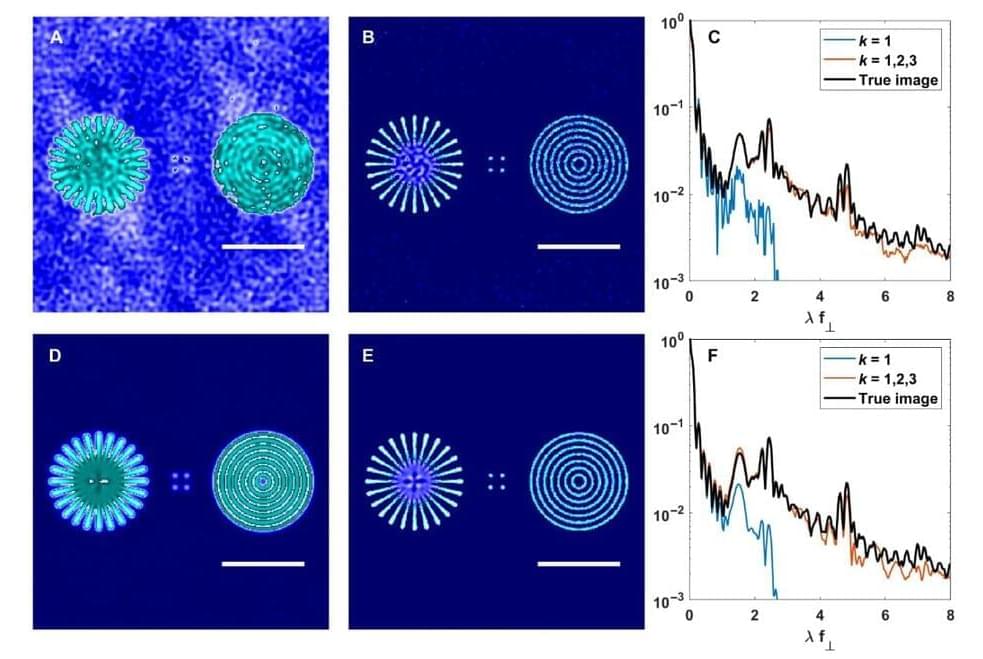
Researchers from Colorado State University and the Colorado School of Mines have thought up a new computational imaging strategy that exploits the best of both the quantum and classical worlds. They developed an efficient and robust algorithm that fuses quantum and classical information for high-quality imaging. The results of their research were published Dec. 21 in Intelligent Computing.
Recently, the quantum properties of light have been exploited to enable super resolution microscopy. While quantum information brings new possibilities, it has its own set of limitations.
The researchers’ approach is based on classical and quantum correlation functions obtained from photon counts, which are collected from quantum emitters illuminated by spatiotemporally structured illumination. Photon counts are processed and converted into signals of increasing order, which contain increasing spatial frequency information. The higher spatial resolution information, however, suffers from a reduced signal-to-noise ratio at increasingly larger correlation orders.
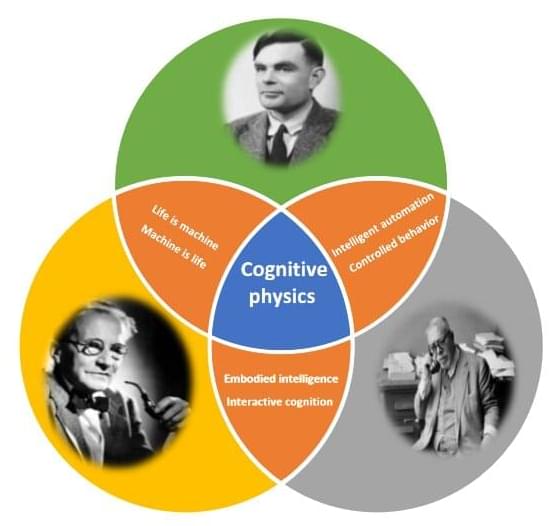
Deyi Li from the Chinese Association for Artificial Intelligence believes that humans and machines have a mutually beneficial relationship.
His paper on machine intelligence, which was published in Intelligent Computing, builds on five groundbreaking works by Schrödinger, the father of quantum mechanics, Turing, the father of artificial intelligence, and Wiener, the father of cybernetics.
Inspired by Schrödinger’s book “What is Life? The Physical Aspect of the Living Cell,” Li believes that machines can be considered living things. That is, like humans, they decrease the amount of entropy or disorder in their environment through their interactions with the world.
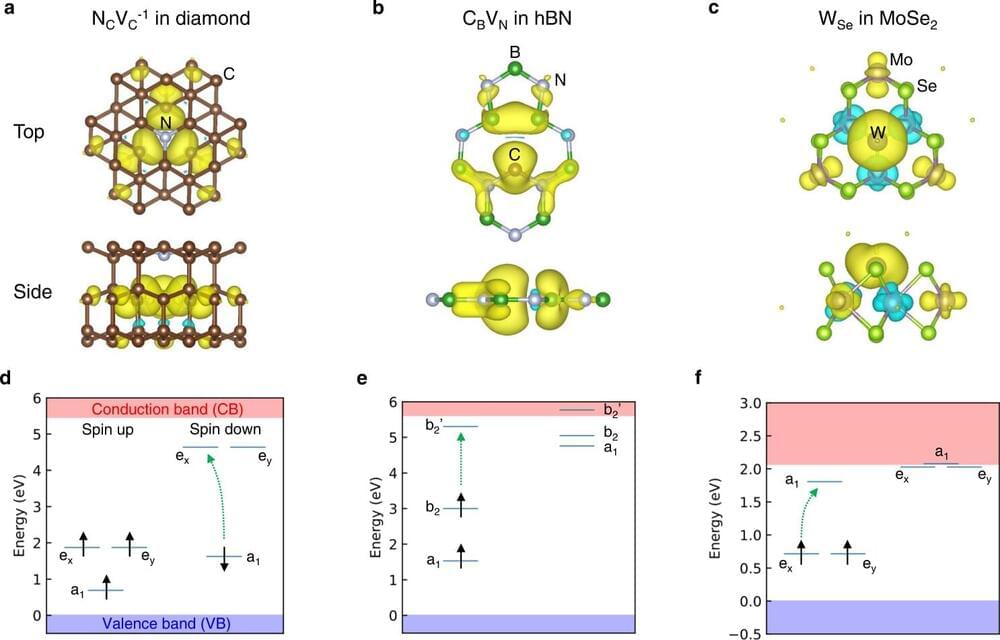
University of Texas at Dallas researchers have developed a new approach that addresses challenges in the field of quantum computing and has the potential to revolutionize computing, communications and electronic security.
To make solid-state qubits, the basic information unit for quantum computers, a defect must be inserted into the solid material to control the spin states of electrons. Creating and positioning the defect, however, especially in the most commonly used solid material—synthetic diamonds —poses a major challenge.
UT Dallas researchers found that making qubits from thin, two-dimensional sheets of crystals called transition metal dichalcogenides (TMDs) instead of diamond can solve this problem. Led by Dr. Kyeongjae Cho, professor of materials science and engineering in the Erik Jonsson School of Engineering and Computer Science, the researchers published their findings online Dec. 6 in Nature Communications.
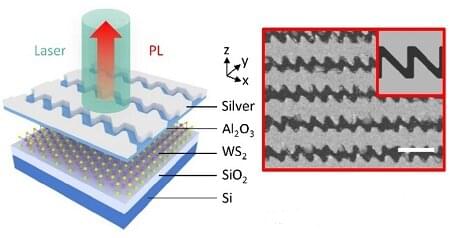
Scientists at the University of Groningen used a silver sawtooth nanoslit array to produce valley-coherent photoluminescence in two-dimensional tungsten disulfide flakes at room temperature. Until now, this could only be achieved at very low temperatures. Coherent light can be used to store or transfer information in quantum electronics. This plasmon-exciton hybrid device is promising for use in integrated nanophotonics (light-based electronics). The results were published in Nature Communications on 5 February.
Tungsten disulfide has interesting electronic properties and is available as a 2-D material. “The electronic structure of monolayer tungsten disulfide shows two sets of lowest energy points or valleys,” explains Associate Professor Justin Ye, head of the Device Physics of Complex Materials group at the University of Groningen. One possible application is in photonics, as it can emit light with valley-dependent circular polarization—a new degree of freedom to manipulate information. However, valleytronics requires coherent and polarized light. Unfortunately, previous work showed that photoluminescence polarization in tungsten disulfide is almost random at room temperature.
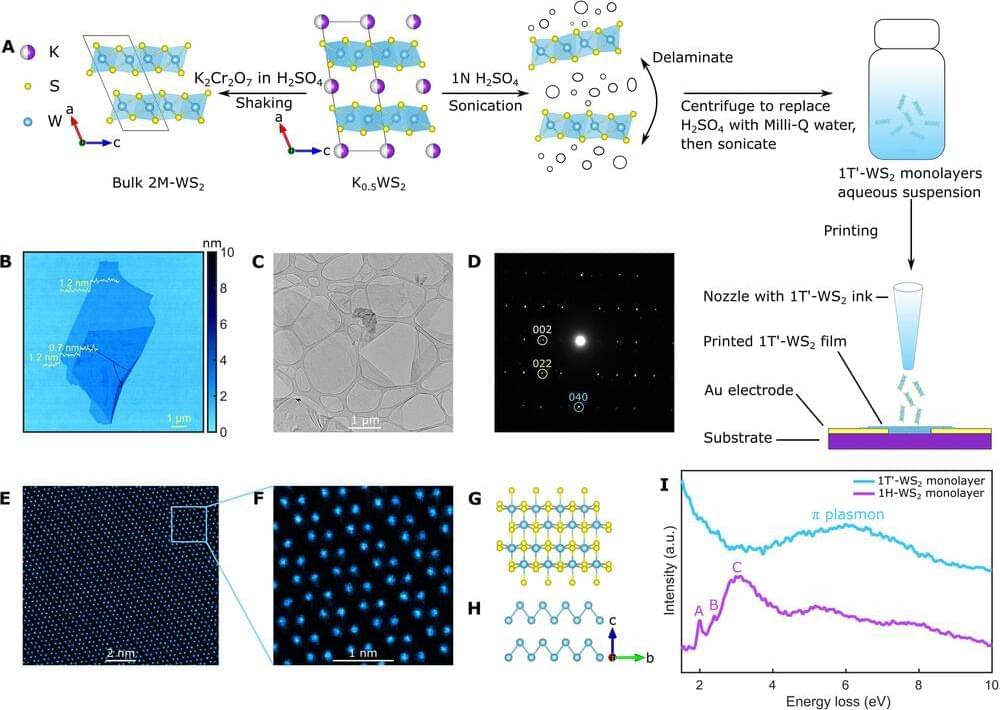
A team of chemists, engineers, material scientists and physicists from Princeton University, Rutgers University and the University of Regensburg has developed a chemical exfoliation technique to produce single-molecule-thick tungsten disulfide ink. The group describes their technique in a paper published in the journal Science Advances.
As research continues into the creation of truly useful quantum computers, scientists continue to search for new materials that could support such machines. In this new effort, the research team looked into finding ways to print very cold circuits inside quantum computers using superconducting ink.
The new method involved a material consisting of layers of tungsten disulfide and potassium. The researchers exfoliated the material by dunking it into a sulfuric acid solution. This dissolved the potassium and left behind single-molecule layers of tungsten disulfide. The final step involved rinsing the acid and remnants in it, leaving the layers of tungsten suspended in a tub of water. In this state, the researchers found that the layers of tungsten disulfide could be used as a form of ink that could be printed onto various types of surfaces, such as plastic, silicon or glass. This left a one-molecule-thick coating on the material.